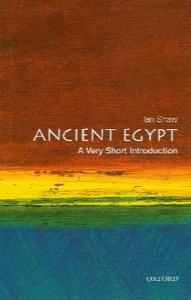توضیحات
In the temple of the goddess Isis on the island of Philae, a few miles to the south of the city of Aswan, one wall bears a brief hieroglyphic inscription. Its significance is not in its content or meaning but purely its date – it was written on 24 August ad 394, and as far as we know it was the last time that the hieroglyphic script was used. The language of ancient Egypt survived considerably longer (Philae temple also contains the last graffiti in the more cursive ‘demotic’ script, dating to 2 December ad 452), and in a sense it still exists in fossilized form in the liturgical texts of the modern Coptic church. Nevertheless, it was around the end of the 4th century ad that the knowledge and use of hieroglyphs effectively vanished, and until the decipherment of hieroglyphs by Jean-François Champollion in 1822, the written world of the Egyptians was unknown, and scholars were almost entirely reliant on the accounts left by Greek and Roman authors, or the sections of the Bible story in which Egypt features. Classical and biblical images of Egypt therefore dominated the emerging subject of Egyptology until almost the end of the 19th century. More than 180 years after Champollion’s breakthrough, the study of ancient Egypt has influenced and permeated a vast number of contemporary issues, from linguistics and ‘Afrocentrism’, to religious cults and bizarre theories involving extraterrestrials. This book combines discussion of the archaeological and historical study of ancient Egypt with appraisal of the impact of Egypt – and its many icons – on past and present Western society and thought. It is intended both to give the reader a sense of some of the crucial issues that dominate the modern study of ancient Egypt, and also to attempt to discuss some of the reasons why the culture of the Egyptians is still so appealing and fascinating to us. Much of the discussion in this Very Short Introduction focuses, initially at least, on the ‘Narmer Palette’ (c.3100 bc), outlining its significance with regard to our understanding of early Egyptian culture. Most of the chapters take different aspects of the palette as starting points for consideration of key factors in Egyptology, such as history, writing, religion, and funerary beliefs. Within this structure, current academic Egyptological ideas and discoveries are occasionally compared and contrasted with more populist and commercial viewpoints, including Egypt’s widespread exploitation by modern mass media. Preface xi Acknowledgements xiii List of illustrations xiv 1 Introduction: the story so far 1 2 Discovering and inventing: constructing ancient Egypt 29 3 History: building chronologies and writing histories 48 4 Writing: the origins and implications of hieroglyphs 72 5 Kingship: stereotyping and the ‘oriental despot’ 82 6 Identity: issues of ethnicity, race, and gender 101 7 Death: mummification, dismemberment, and the cult of Osiris 113 8 Religion: Egyptian gods and temples 126 9 Egyptomania: the recycling and reinventing of Egypt’s icons and images 137 References 161 Further reading 166


